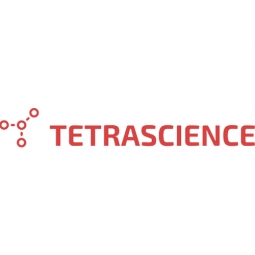技术
- 分析与建模 - 机器学习
- 应用基础设施与中间件 - 数据可视化
适用行业
- 药品
服务
- 数据科学服务
关于客户
本案例研究中的客户是制药和生物技术行业的两家临床阶段的初创公司。这些公司经常与合同研究组织 (CRO) 合作,对候选药物的药代动力学 (PK) 特性进行吸收、分布、代谢和排泄 (ADME) 测试。他们在协调不同 CRO 报告的数据方面面临挑战,这对于扩大 ADME/PK 流程至关重要。药代动力学和药效学 (PK/PD) 研究的手动数据工作流程非常费力且容易出错。
挑战
制药和生物技术组织经常与合同研究组织 (CRO) 合作,对候选药物的药代动力学 (PK) 特性进行吸收、分布、代谢和排泄 (ADME) 测试。然而,大多数 CRO 使用自己的数据格式进行标准分析,这可能给生物制药公司带来数据聚合挑战。协调不同 CRO 报告数据的能力对于扩大 ADME/PK 流程至关重要。药代动力学和药效学 (PK/PD) 研究的手动数据工作流程非常费力。科学家必须手动检查CRO的报告,这既耗时又容易出错。
解决方案
TetraScience 提供了一个解决方案,通过构建基于云的数据处理系统,利用上游数据科学应用程序实现 Tecan、Titian、Dotmatics 和 PerkinElmer Envision 工作流程的自动化。这种与供应商无关的集成使科学家能够在一个地方访问所有仪器数据、信息学软件信息和科学数据可视化,无需从多个位置移动和更新文件。该系统还实现了 CRO 数据输入、处理和传输的自动化,节省了科学家的时间并减少了人为错误。这种统一的数据可用于结构活动关系 (SAR) 的可视化、数据科学、人工智能和机器学习 (AI/ML)。
运营影响
数量效益

Case Study missing?
Start adding your own!
Register with your work email and create a new case study profile for your business.
相关案例.

Case Study
Case Study: Pfizer
Pfizer’s high-performance computing software and systems for worldwide research and development support large-scale data analysis, research projects, clinical analytics, and modeling. Pfizer’s computing services are used across the spectrum of research and development efforts, from the deep biological understanding of disease to the design of safe, efficacious therapeutic agents.

Case Study
Fusion Middleware Integration on Cloud for Pharma Major
Customer wanted a real-time, seamless, cloud based integration between the existing on premise and cloud based application using SOA technology on Oracle Fusion Middleware Platform, a Contingent Worker Solution to collect, track, manage and report information for on-boarding, maintenance and off-boarding of contingent workers using a streamlined and Integrated business process, and streamlining of integration to the back-end systems and multiple SaaS applications.

Case Study
Process Control System Support
In many automated production facilities, changes are made to SIMATIC PCS 7 projects on a daily basis, with individual processes often optimised by multiple workers due to shift changes. Documentation is key here, as this keeps workers informed about why a change was made. Furthermore, SIMATIC PCS 7 installations are generally used in locations where documentation is required for audits and certification. The ability to track changes between two software projects is not only an invaluable aid during shift changes, but also when searching for errors or optimising a PCS 7 installation. Every change made to the system is labour-intensive and time-consuming. Moreover, there is also the risk that errors may occur. If a change is saved in the project, then the old version is lost unless a backup copy was created in advance. If no backup was created, it will no longer be possible to return to the previous state if and when programming errors occur. Each backup denotes a version used by the SIMATIC PCS 7 system to operate an installation. To correctly interpret a version, information is required on WHO changed WHAT, WHERE, WHEN and WHY: - Who created the version/who is responsible for the version? - Who released the version? - What was changed in the version i.e. in which block or module of the SIMATIC PCS 7 installation were the changes made? - When was the version created? Is this the latest version or is there a more recent version? - Why were the changes made to the version? If they are part of a regular maintenance cycle, then is the aim to fix an error or to improve production processes? - Is this particular version also the version currently being used in production? The fact that SIMATIC PCS 7 projects use extremely large quantities of data complicates the situation even further, and it can take a long time to load and save information as a result. Without a sustainable strategy for operating a SIMATIC PCS 7 installation, searching for the right software version can become extremely time-consuming and the installation may run inefficiently as a result.

Case Study
ELI LILLY ADOPTS MICROMEDIA’S ALERT NOTIFICATION SYSTEM
Pharmaceutical production is subject to a strict set of enforced rules that must be adhered to and compliance to these standards is critically necessary. Due to the efforts of WIN 911’s strategic partner Micromedia, Lilly was able to adopt an alarm notification infrastructure that integrated smoothly with their existing workflows and emergency hardware and protocols. These raw energy sources enable the industrial process to function: electricity, WIN-911 Software | 4020 South Industrial Drive, Suite 120 | Austin, TX 78744 USA industrial steam, iced water, air mixtures of varying quality. Refrigeration towers, boilers and wastewater are monitored by ALERT. Eli Lilly identified 15000 potential variables, but limitations compelled them to chisel the variable list down to 300. This allowed all major alarms to be covered including pressure, discharge, quantity of waste water discharged,temperature, carbon dioxide content, oxygen & sulphur content, and the water’s pH.









